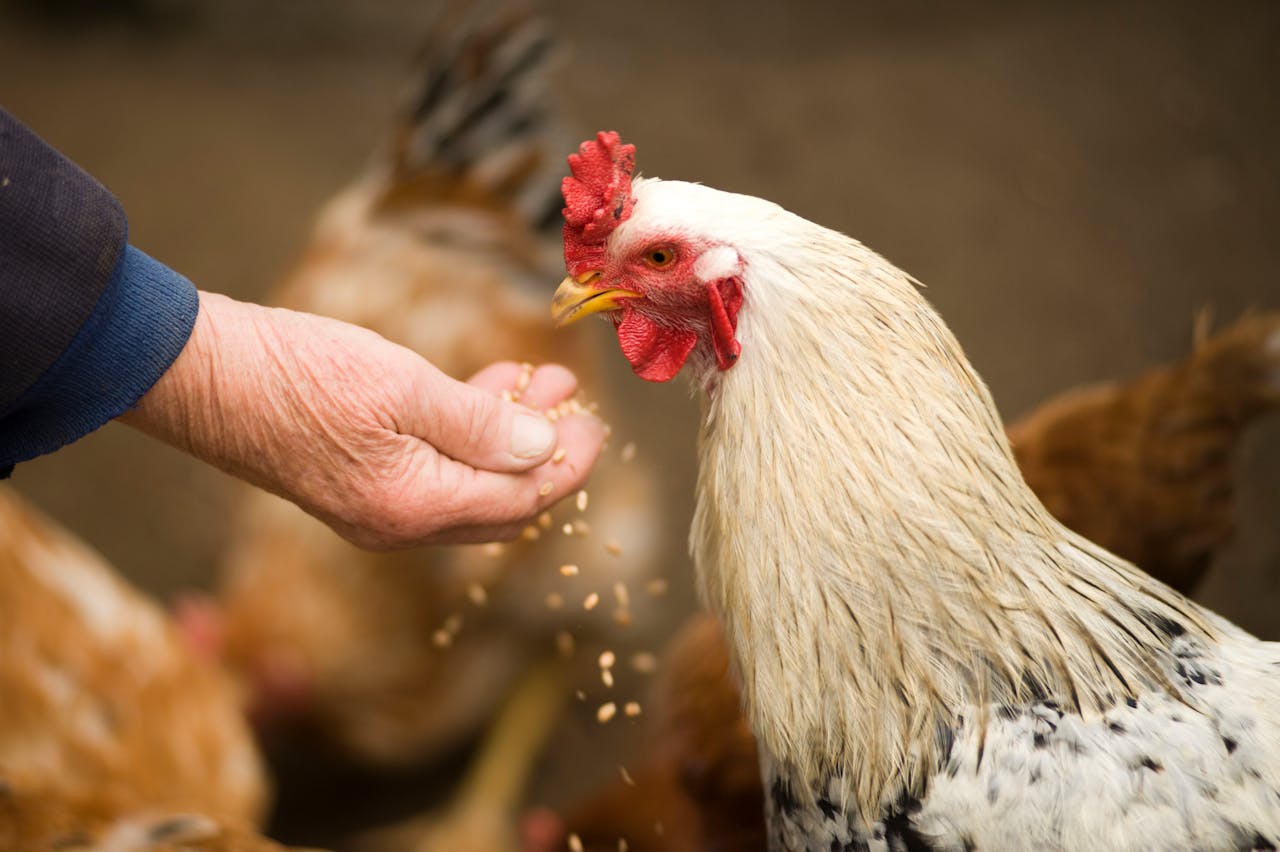Nucleotide Supplementation: A Crucial Defence Against Necrotic Enteritis and Coccidiosis
The addition of nucleotides to the diet helps to prevent intestinal dysbiosis. By averting enteritis, nucleotides create the conditions for obtain excellent conversion rates and long-lasting productivity.
Author: Pier Enrico Rossi, DVM
 For decades, bacitracin, lincomycin, avoparcin, virginiamycin, tylosin, and avilomycin have enabled the control of necrotic enteritis. Subsequently, regulations aimed at reducing growth-promoting antibiotics, anticoccidials, and ionophores have led to a resurgence of this disease.
For decades, bacitracin, lincomycin, avoparcin, virginiamycin, tylosin, and avilomycin have enabled the control of necrotic enteritis. Subsequently, regulations aimed at reducing growth-promoting antibiotics, anticoccidials, and ionophores have led to a resurgence of this disease.
The etiological agent of necrotic enteritis is Clostridium perfringens, a Gram-positive, ubiquitous, anaerobic, and spore-forming bacterium. The spores enable Clostridium perfringens to survive in livestock facilities for a long period, facilitating transmission across successive production cycles. In this way it becomes impossible to avoid contact between animals and the bacterium.
Clostridium perfringens strain differ in virulence and their ability to cause disease. The pathogenic strains are able to produce toxins, bacteriocins, and hydrolytic enzymes, enabling them to adhere, form biofilms, and colonize the intestine.
Necrotic enteritis can manifest itself in both clinical and subclinical form. The disease may onset between 2 and 4 weeks of age. The clinical evident phase is short and characterized by depression, ruffled feathers, locomotor ataxia, diarrhoea, and death within a few hours, with a mortality rate that can reach 1% per day.
The subclinical form, difficult to recognize, is the economically most dangerous form; if untreated, it will negatively impact conversion rates and group uniformity. Although it is well-established that pathogenic strains can alter the normal intestinal microflora by replacing commensal (non-pathogenic) clostridia, the only presence of Clostridium perfringens is not sufficient to trigger necrotic enteritis. It is essential an intestinal wall already damaged, as Clostridium perfringens produces alpha-toxin, a phospholipase, a mucolytic enzyme, that allows it to be feed by mucus.
If upstream of Clostridium replication there is an event that triggers increased mucus secretion, the damaged intestine produces T lymphocytes, cytokines, interferon, and interleukins that act on the mucous goblet cells of the intestinal epithelium, activating them and enhancing mucus secretion, thus enabling the proliferation of Clostridium perfringens.
Coccidiosis
There are many agents that can create damages to the intestinal mucosa: enteric viruses, helminths, mycotoxins, biogenic amines, fat rancidity, and stress. However, the most prevalent pathology is duodenal and jejunal coccidiosis, caused by Eimeria maxima and Eimeria acervuline, which more frequently induce damage to broilers intestines.
Coccidiosis can occur due to increased resistance to coccidiostats or following the use of live vaccines against coccidiosis. These vaccines consist of non-attenuated or minimally attenuated Eimeria species, which must invade the intestinal mucosa and replicate. However, to induce robust immunity, they require three consecutive cycles of infection, risking epithelial damage.
To control coccidiosis and reduce the incidence of necrotic enteritis, a proper rotation of anticoccidial drugs is necessary to preserve their effectiveness. Implementing rotation between drugs and vaccination, based on risk levels and seasonal incidence, along with proper brooder management to promote adequate cycling of oocysts, is crucial to avoid adverse effects and prepare the farm for the occurrence of necrotic enteritis.
The effectiveness of certain polyphenols, combined with plant extracts and minerals, has proven to be effective in reducing the bacterial count in the litter after faecal excretion. This could be a valuable tool in reducing the change of reinfection by Clostridium perfringens.
To prevent alterations that may favour necrotic enteritis, the use of probiotics has become widespread to balance the intestinal microflora. It has been demonstrated that certain strains of lactobacilli—used either alone or in combination with organic acids (formic, propionic, and butyric)—reduce the severity of lesions from haemorrhagic enteritis and the resulting mortality.
Other alternative products, such as MOS or beta-glucans, have demonstrated the ability to reduce the severity of lesions caused by necrotic enteritis due to their anti-inflammatory effects. They promote the secretion of immunoglobulins and the production of short-chain fatty acids (SCFA). It is important remark that Clostridium perfringens, like other enteric pathogens, is a highly adaptable microorganism. Therefore, it is necessary to use these products in a balanced way to prevent the development of resistance phenomena.
The use of nucleotides
 A promising new opportunity is represented by the use of nucleotides.
A promising new opportunity is represented by the use of nucleotides.
The term nucleotide describes a substance composed of a sugar, a phosphate group, and a nitrogenous base; the bases are purines and pyrimidines, and the sugar is either ribose or deoxyribose. Nucleotides represent the building blocks of RNA and DNA. Additionally, nucleotides are the constituents of molecules such as ATP, NADP, and NADH, responsible for transferring energy produced by the metabolism of carbohydrates, lipids, and proteins.
In a standard condition, nucleotides are not considered essential nutrients, because they can be synthetized by the organism. Nucleotides become essential in case of insufficient synthesis, specifically during growth and in the presence of pathologies. In particular, rapidly turning-over tissues, such as those in the intestinal mucosa, are unable to produce sufficient quantities of nucleotides to meet their needs. It has been demonstrated that nucleotides provided through nutrition act as growth factors on intestinal cells, promoting their differentiation and maturation. This results in increased thickness of the intestinal mucosa, increased villous height and deeper crypts.
Several studies have demonstrated that the supply of nucleotides through nutrition promotes the increase in digestive enzyme activity and stimulates the growth of Lactobacilli and Bifidobacteria, at the expense of Gram-negative bacteria such as Escherichia coli. It is the positive effect of nucleotides on Lactobacilli and Bifidobacteria seems to be due to the increased absorption of trace elements in ionic form by enterobacteria.
In addition, the supply of nucleotides has proven to be very useful in the clinical and functional recovery of liver conditions. Nucleotides promote hepatocyte activity through mitochondrial stimulation aimed at stimulating sirtuin production, accelerating protein synthesis and glucose deposition. This prevents the accumulation of cholesterol and other lipids, reducing the risk of hepatic steatosis. In this way, nucleotides can improve animal productive life extension, especially for laying hens.
While it is true that nucleotides are not considered essential because they can be synthesized from simple substances, it is true, however, that in specific phases, the metabolic synthesis processes may not be able to meet their demand.
For example, during periods of rapid cell turnover, such as the normal growth process of the chick. In the first seven days of life, of which the first three define a significant portion of its subsequent performance, the chick grows by about fourfold.
Although nature provides the chick with nutrients through the residue of the yolk sac, this food reserve is insufficient to face the challenges and stress of the very first days of life.
Having a source of soluble nucleotides derived from yeast extraction allows for administration both in drinking water and in feed, right from the very first hours of life. This enables the chick to reach its maximum growth potential through proper development of the enteric system and its correct microbiota.
The benefits become immediately apparent, with a lower viscosity of feces in the first days of life, resulting in a reduced incidence of anal pasting. The litter will also be drier in the early days, showing a clear reduction in foot pad dermatitis (FPD). Furthermore, the growth will demonstrate group uniformity with an improved conversion rate.
The advantages listed so far are particularly evident in broilers, while in the breeding of long-lived animals such as laying hens, the benefits will stem from improved intestinal well-being, the restoration of liver activity, and the ability of nucleotides, once inside a cell, to generate NAD (nicotinamide adenine dinucleotide), a molecule essential for the activity of more than 500 enzymes, including sirtuins. Sirtuin deficiency is a cause of aging. All of this will result in a better conversion rate, a lower percentage of dirty eggs, a reduction in shell fragility, and the extension of productive activity.

